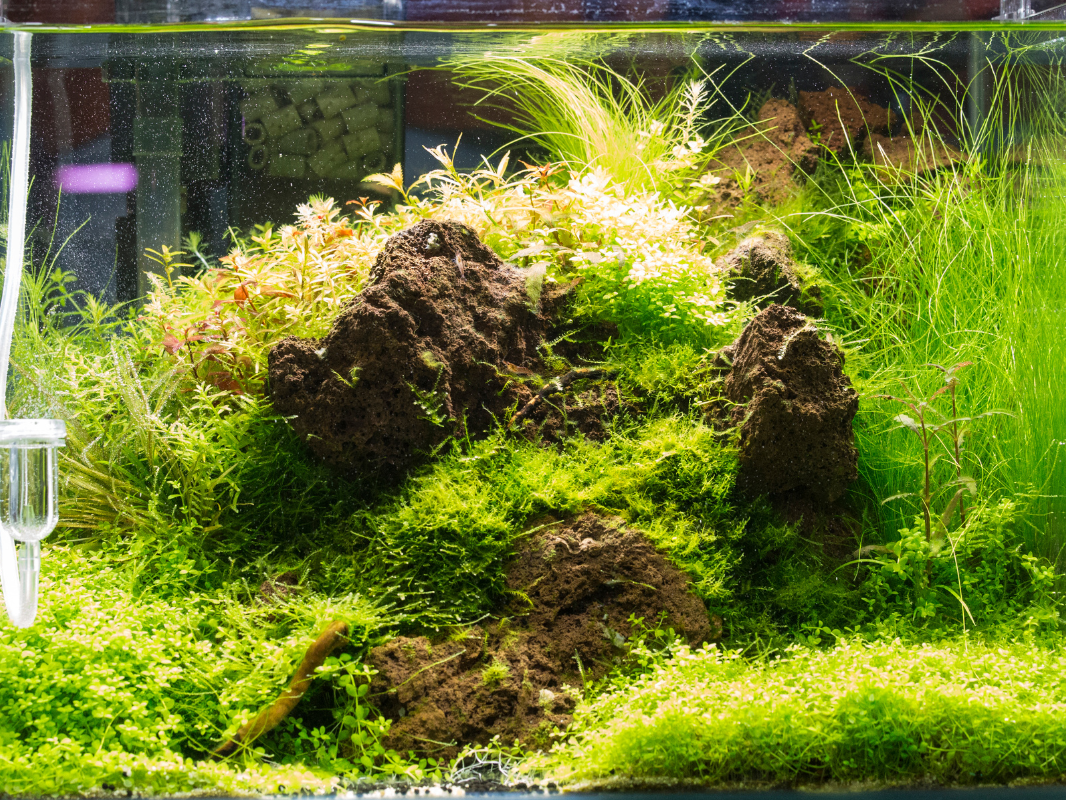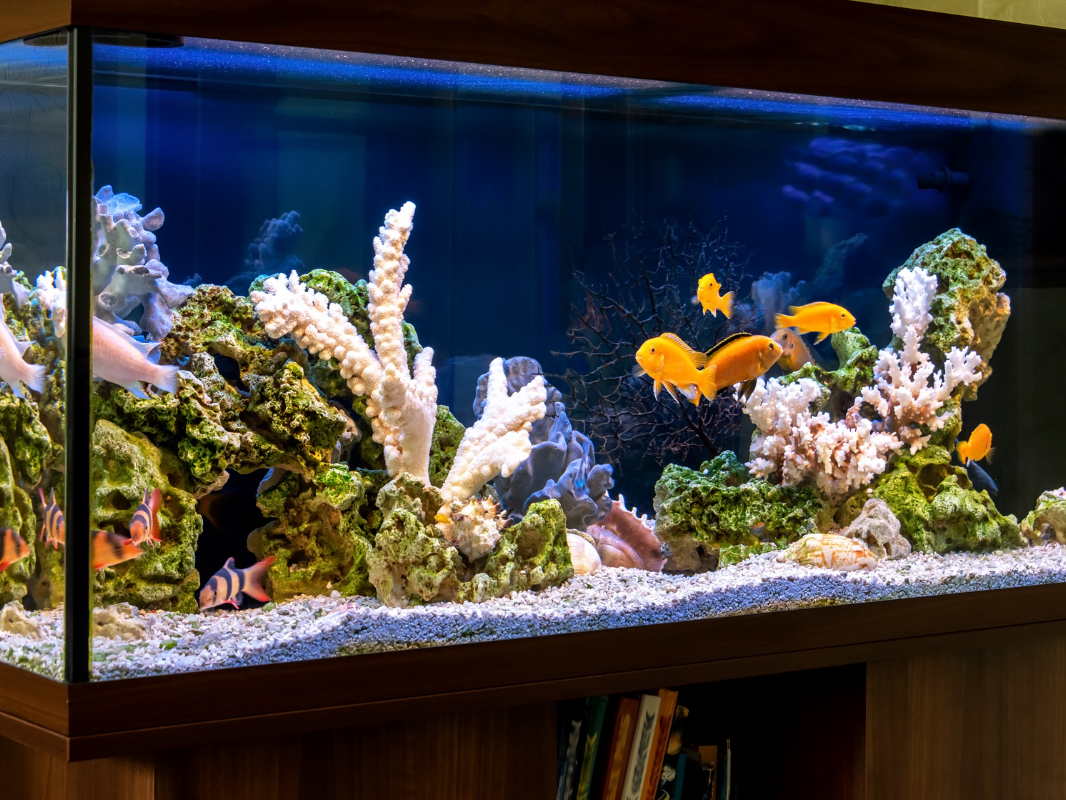Saltwater Aquariums: A Gateway to Underwater Wonders
Diving into the world of saltwater aquariums is like opening a door to a miniature ocean. Unlike their freshwater counterparts, saltwater aquariums offer a unique window into the vibrant and diverse world of marine life. Whether you’re a seasoned aquarist or a curious beginner, the allure of creating your own underwater ecosystem is undeniable.
Introduction to Saltwater Aquariums: An Overview
Saltwater aquariums, often seen as a step up from freshwater tanks, offer a mesmerizing variety of colorful fish, intricate corals, and other marine organisms. Unlike freshwater tanks, they require a bit more attention to detail, especially in terms of water chemistry and habitat requirements. But don’t let this intimidate you! With the right knowledge and tools, anyone can embark on this rewarding journey.
Register for our latest in-depth reviews and product round-ups from the experts
Enter your email address below to receive our twice monthly reviews emails.
By entering your details, you are agreeing to our terms and conditions and privacy policy. You can unsubscribe at any time.
Planning Your Saltwater Aquarium: Key Considerations
Location and Space: Choosing the right spot for your aquarium is crucial. It should be away from direct sunlight to prevent algae growth and temperature fluctuations. Also, consider the weight of a fully set-up aquarium; make sure the floor can support it.
Budgeting: Saltwater aquariums can be an investment. From the tank and stand to the lighting, filtration system, and livestock, costs can add up. Plan your budget accordingly, and remember, good quality equipment means less hassle in the long run.
Time and Maintenance: Saltwater tanks require regular maintenance. This includes water changes, testing water parameters, and cleaning. Ensure you have the time to dedicate to these tasks to keep your aquatic pets healthy.
Designing Your Saltwater Aquarium: Aesthetic and Functional Aspects
Choosing the Right Tank: Size matters in saltwater aquariums. Larger tanks are generally more stable in terms of water parameters but require more equipment and maintenance. Think about what types of fish and corals you want to keep; this will guide your tank size decision.
Lighting and Filtration Options: Proper lighting is crucial for the health of corals and fish. LED lights are a popular choice for their efficiency and spectrum range. Filtration is equally important; consider options like canister filters, protein skimmers, and live rock for biological filtration.
Substrate and Decoration: The type of substrate you choose (sand or crushed coral) can impact the tank’s overall look and its inhabitants. Decorations like rocks and caves provide hiding spots for fish and structure for coral attachment.
Aquascaping for Saltwater Aquariums: Creative Ideas and Tips
Aquascaping, the art of arranging aquatic plants, rocks, and substrates in an aesthetically pleasing manner, is where your creativity can shine. Here are some tips:
- Start with a Focal Point: Choose an eye-catching piece of rock or a striking coral as your centerpiece.
- Balance is Key: Aim for a natural look. Don’t overcrowd the tank; give your marine life enough space to thrive.
- Play with Heights and Depths: Create a sense of depth by placing taller elements towards the back and shorter ones in front.
Selecting Fish and Coral for Your Saltwater Aquarium
When it comes to stocking your tank, research is your best friend. Some fish are more beginner-friendly than others. For instance, clownfish are hardy and adapt well to aquarium life. Corals come in various types, each with different light and water flow requirements. Start with easier species and gradually work your way up as you gain more experience.
Maintaining Your Saltwater Aquarium: Essential Practices
Regular maintenance is the key to a healthy saltwater aquarium. This includes:
- Regular Water Changes: Helps remove pollutants and replenish essential minerals.
- Testing Water Parameters: Keep an eye on ammonia, nitrite, nitrate, pH, and salinity levels.
- Cleaning: Algae can quickly overtake a tank if not regularly cleaned.
Advanced Techniques and Equipment for Saltwater Aquariums
As you grow in your saltwater aquarium journey, you might want to explore advanced techniques and equipment:
- Automated Systems: Consider investing in auto top-off systems and dosing pumps for stability.
- Advanced Lighting: Programmable LED lights can mimic natural light cycles and promote coral growth.
- Reef-Safe Additives: Use additives and supplements cautiously and as per your tank’s specific needs.
Tables with Relevant Facts:
| Fact | Detail |
| Average Setup Cost | $200 – $2000+ |
| Maintenance Time | 2-4 hours/week |
| Ideal Tank Size | 30 gallons+ |
| Common Beginner Fish | Clownfish, Damsels |
| Common Beginner Corals | Zoanthids, Mushroom Corals |
Diving Deeper into Saltwater Aquariums
As we further explore the captivating realm of saltwater aquariums, we uncover more about the intricate care, the vibrant marine life, and the frequently asked questions that help enthusiasts make the most of their aquatic adventure.
FAQs: Common Questions About Saltwater Aquariums
- Regular water changes, typically 10-20% every two weeks, are crucial for maintaining water quality.
- Gradually introduce new fish to your tank’s water conditions using the drip acclimation method to prevent shock.
- Yes, but ensure they have compatible lighting and water flow needs and enough space to prevent territorial conflicts.
Exploring Saltwater Aquarium Livestock: Fish and Coral Selection
Choosing the right inhabitants for your saltwater aquarium is both an art and a science. Here’s a quick guide:
- Fish Selection: Opt for hardy species like clownfish, damselfish, or gobies as a beginner. Research their compatibility with other tank mates.
- Coral Selection: Soft corals like leather corals or mushroom corals are great for starters. They are less demanding and add a splash of color to your tank.
Saltwater Aquarium Maintenance: Keeping Your Tank Thriving
A well-maintained tank is a happy tank. Here are some essential maintenance tips:
- Regular Testing: Keep tabs on ammonia, nitrate, nitrite, pH, and salinity levels. Consistency is key to a healthy tank.
- Cleaning Regimen: Clean the glass, remove algae, and check your equipment regularly to ensure everything is running smoothly.
Advanced Saltwater Aquarium Techniques for Enthusiasts
As you gain confidence, you might want to explore more advanced aspects:
- Reef Tanks: These are specialized saltwater tanks that focus on growing corals and other invertebrates.
- Species-Specific Tanks: Consider setting up a tank that caters to the specific needs of a particular species, like a seahorse tank.
Tables with Advanced Saltwater Aquarium Facts:
| Advanced Topic | Details |
| Reef Tank Lighting | LED lights with programmable features |
| Protein Skimmers | Essential for removing organic waste |
| Water Flow | Crucial for coral health; varies by species |
Martin Cochran
Dive into fish care with Martin, your guide from the coastal beauty of Brighton. He shares tips on keeping your aquatic companions happy and healthy. Join him on a fin-tastic journey where every swim is a voyage of joy. Trust Martin for a smooth sailing aquatic experience.




